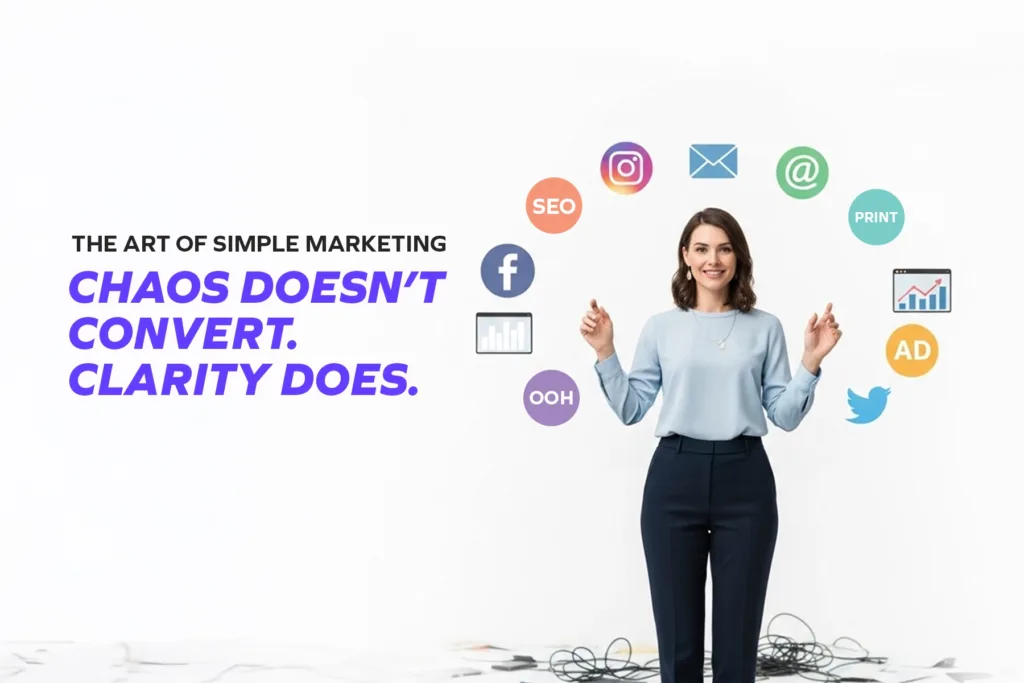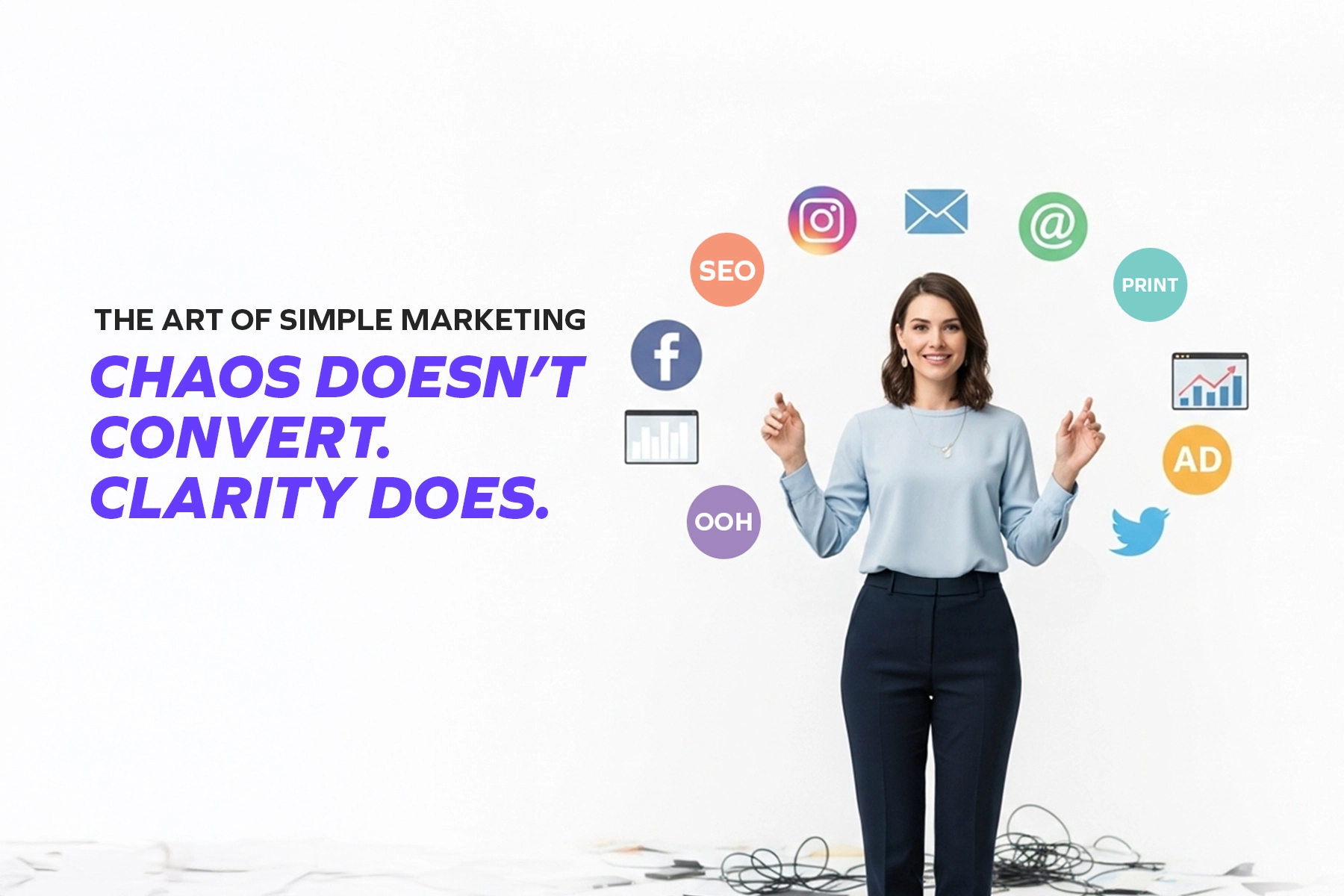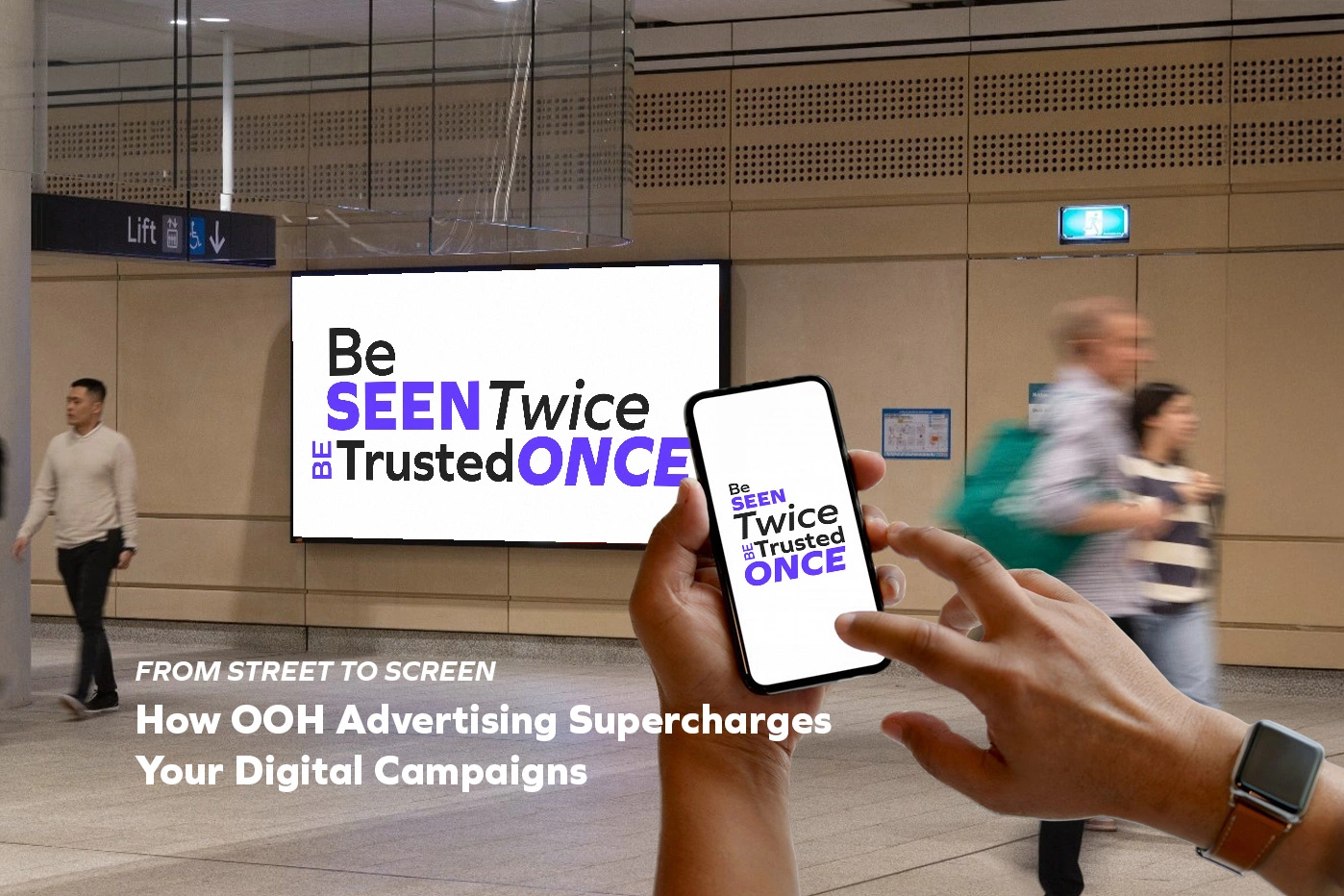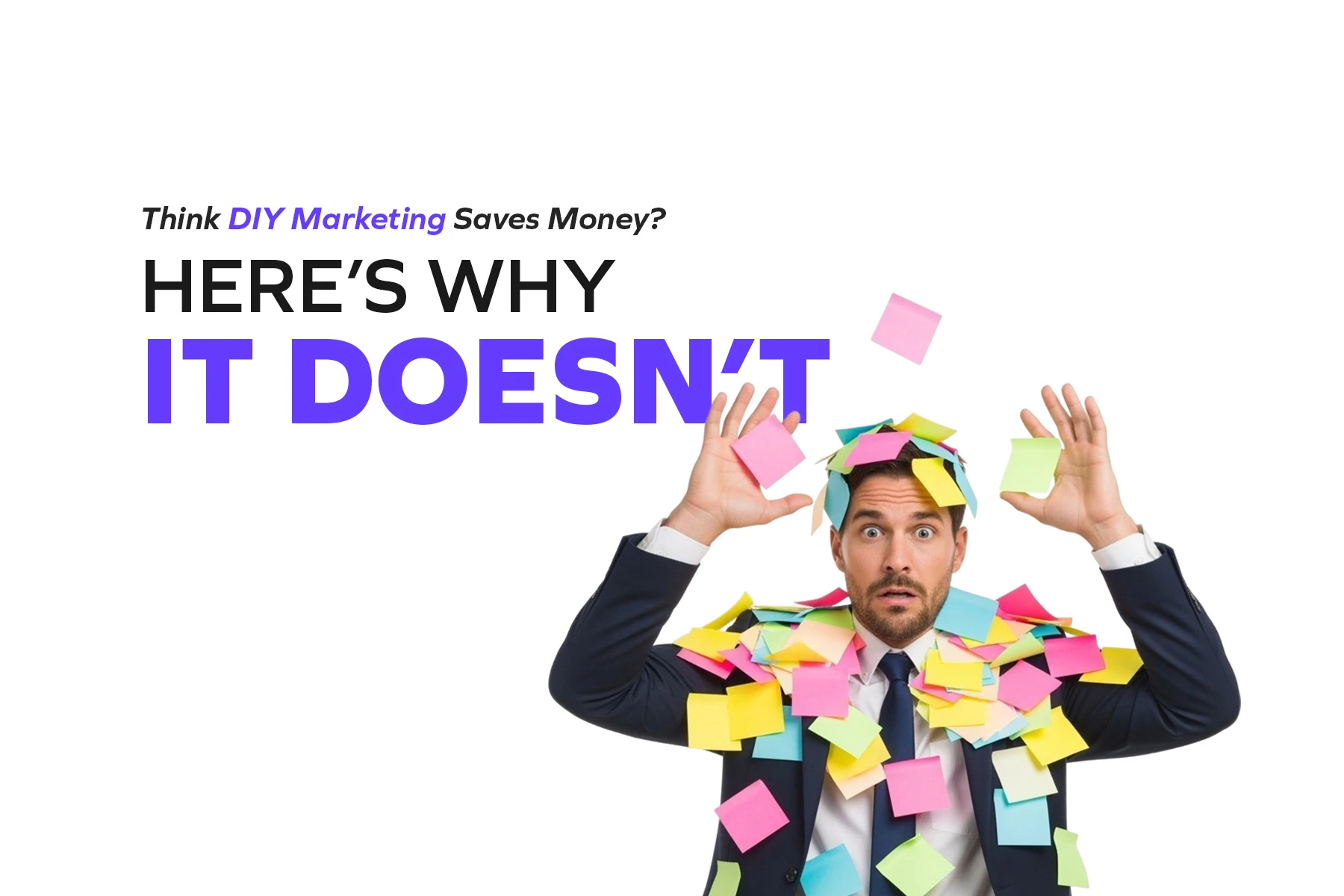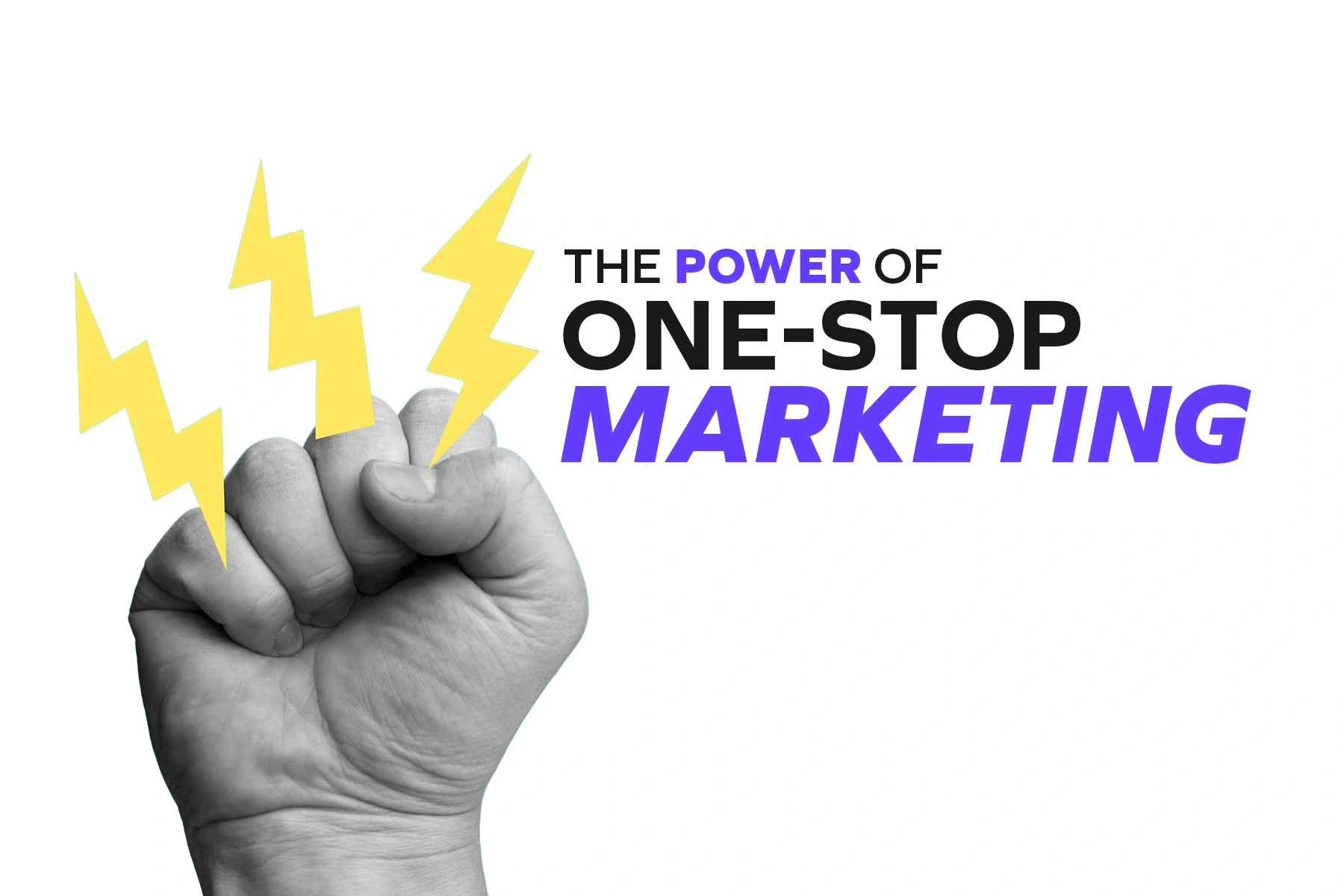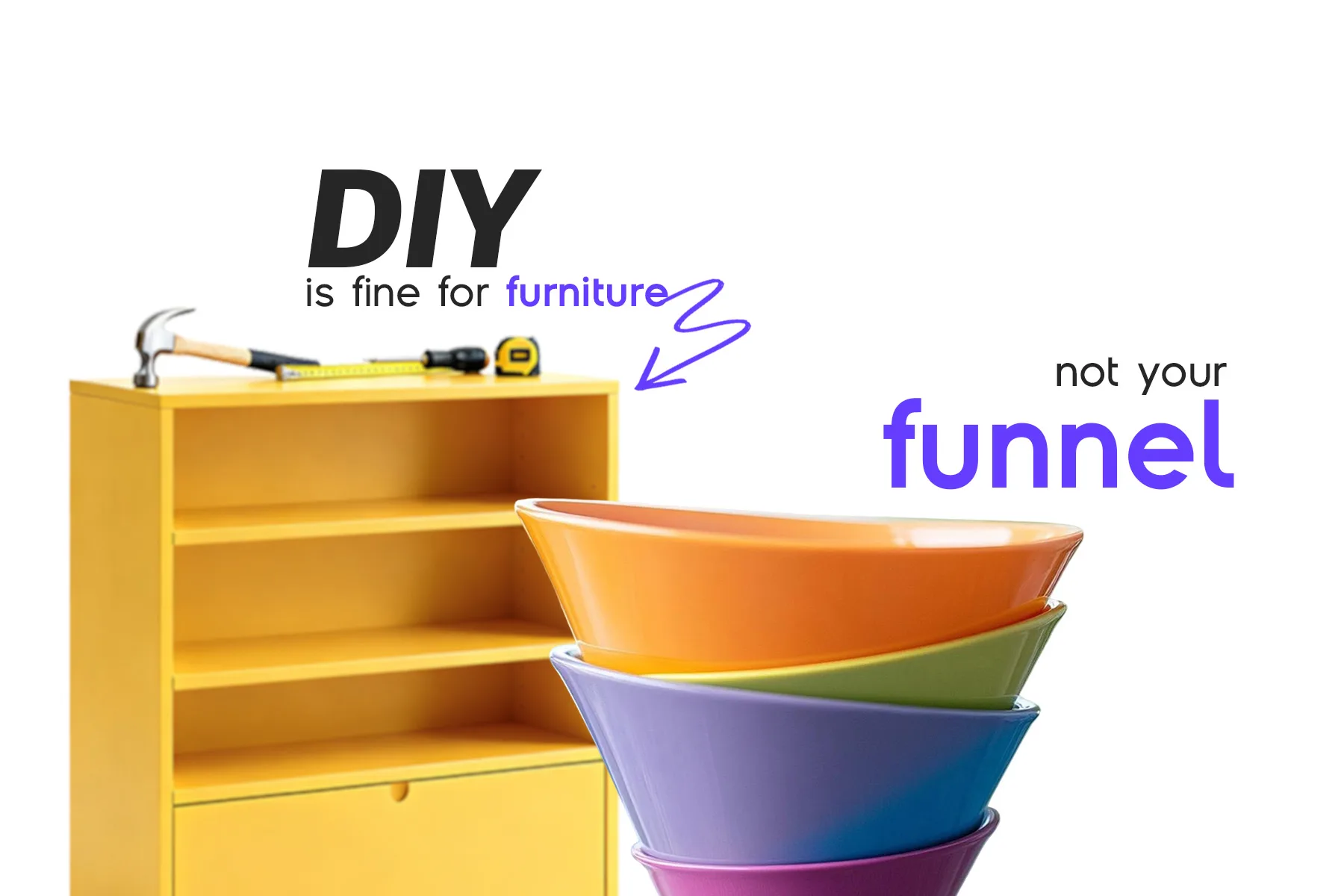Let’s be honest — marketing can feel like a never-ending circus act.
One minute you’re trying to crack Instagram’s algorithm, the next you’re dancing to a TikTok trend you don’t even like, and somewhere in between you’re posting on LinkedIn because, well, you probably should.
Before you know it, you’ve got ten tabs open, five campaigns running, and not a single one actually moving the needle.
Sound familiar? You’re not alone.
In the rush to be everywhere and do everything, most businesses end up with what I like to call marketing chaos — loud, busy, and exhausting. The irony? The more we try to do, the less we often achieve.
Now imagine the opposite. You’ve got a clear message, a consistent voice, and a strategy that doesn’t make you want to pull your hair out. Your audience gets who you are, your brand looks cohesive, and conversions start rolling in — calmly, confidently, and almost effortlessly.
That’s the magic of simple marketing. It’s not about doing less — it’s about doing what matters most.
Why Simplicity Works Better Than a 50-Tab Strategy
Here’s the thing: complexity might feel impressive, but simplicity sells. When you strip away the clutter, your brand’s message finally gets room to breathe — and that’s when customers start to listen.
1. Clarity Cuts Through the Noise
Your audience is bombarded with information every second — ads, reels, stories, emails, DMs, you name it. If your message isn’t crystal clear, it’ll vanish in that noise faster than you can say “engagement drop.”
The brands that win today aren’t necessarily louder — they’re clearer.
Take Apple, for instance. Their marketing isn’t filled with jargon about megapixels or chip speeds. Instead, they focus on how their products make you feel. One message, one story, beautifully simple.
That clarity gives their brand power — and you can have that too, even if you’re not selling iPhones.
2. Consistency Builds Trust
You can’t build trust with a personality crisis. If your tone, visuals, and message change every few weeks, your audience won’t know who you are or what you stand for.
Simple marketing makes consistency easy. When your brand voice is grounded in one core message, it naturally flows across everything — from your social media captions to your website headlines.
Consistency is like brand oxygen — invisible but essential. The more dependable your brand feels, the easier it becomes for people to trust and choose you over competitors.
3. Connection Beats Confusion
Let’s face it — no one wants to decode your marketing message like it’s a riddle.
People buy from people they feel connected to. That connection doesn’t come from fancy funnels or buzzwords; it comes from being human. From telling stories. From saying, “Hey, we get you.”
Simple marketing sounds like a real conversation. It’s not “synergising omni-channel touchpoints” — it’s “helping you grow your business without the burnout.”
That shift from corporate to conversational is where conversion actually begins.
4. You’ll Finally Get Your Time (and Sanity) Back
Marketing burnout is real. The more complicated your system, the harder it is to maintain — and the faster your creativity dries up.
Simplifying your marketing doesn’t mean giving up — it means getting smart. You stop chasing every shiny trend and start focusing on the channels and strategies that actually work for you.
You save time, money, and mental space — and funnily enough, that’s often when your creativity and results start to soar.
Real-World Example: How Mailchimp Proved That Simple Scales
Mailchimp is a perfect case study of how simplicity can build an empire.
When they first launched, they weren’t the most advanced email marketing tool out there. Competitors had more features, more integrations, and (let’s be honest) more complicated pricing. But Mailchimp did something revolutionary — they stayed simple.
They focused on one mission: making email marketing easy for small businesses. Their interface was clean, their tone was friendly, and their branding felt fun, not corporate.
Even their mascot — that cheerful little monkey — helped humanise their brand.
The result?
Mailchimp grew from a tiny startup into one of the most recognised names in marketing software. Their customers didn’t choose them for complexity; they chose them for clarity, usability, and approachability.
That’s what happens when you embrace simple marketing — people understand you, they like you, and they stick around.
How to Turn Your Own Chaos Into Conversions
Ready to simplify your marketing without losing the magic? Here’s where to start.
1. Find Your Core Message
If someone asked, “What does your business actually do?” could you answer in one sentence? If not, start there.
Your core message should be short enough to fit on a sticky note but strong enough to power your entire strategy. Once you’ve nailed that, weave it through everything — your social media bios, website, emails, and ads.
2. Choose Your Channels Wisely
Here’s a liberating truth: you don’t need to be on every platform.
If your audience lives on Instagram and LinkedIn, forget the rest. Focus on doing those two channels exceptionally well. Quality beats quantity every single time.
Think of it like running a café — you don’t need twenty coffee blends, just one really good one people keep coming back for.
3. Create Repeatable Systems
Simple marketing thrives on systems. Build templates, batch your content, automate what you can, and create weekly rhythms that save your brainpower for creativity — not logistics.
Systems don’t kill creativity; they give it structure.
4. Speak Like a Human
Stop trying to sound like a press release. Talk like you would to a customer across the counter.
Tell stories. Share wins and fails. Let your personality shine through your captions, videos, and newsletters.
When your audience feels like they know you, selling becomes effortless — because it’s just a continuation of a conversation.
5. Do a Quarterly “Marketing Declutter”
Every few months, step back and ask:
– What’s actually working?
– What feels forced or draining?
– What can we simplify or stop doing altogether?
Treat it like cleaning out your wardrobe — if it doesn’t fit your goals or bring you joy (or leads), it’s time to let it go.
A Quick Australian Reality Check
Here’s the funny part — in Australia, where small businesses thrive on relationships and authenticity, simple marketing fits perfectly.
It’s not about pretending to be the next global giant. It’s about showing your community who you are, what you stand for, and how you can make their lives a little easier or better.
Whether you’re a café in Sydney, a tradie in Brisbane, or a digital startup in Melbourne, clarity and consistency will always outperform chaos and confusion.
Your 3-Step Kick-Off Plan for Tomorrow
Let’s make it practical. Here’s what you can do right after finishing this blog:
- Define one sentence that sums up your brand’s value.
Example: “We help local businesses grow through smart, creative marketing.”
- Pick two marketing channels that matter most.
Commit to showing up there consistently for the next 90 days. Ignore the rest.
- Create one simple system.
Maybe it’s a weekly content calendar or a set of Canva templates for social posts. Keep it easy to repeat.
Simple, right? And that’s exactly the point.
Final Thoughts: Simple Is the New Smart
The truth is, marketing doesn’t need to feel like a full-time survival game. You don’t have to chase every trend, master every platform, or outspend your competitors to win.
You just need to be clear, consistent, and connected.
The brands that simplify don’t lose their creativity — they amplify it. They create breathing room for better ideas, stronger stories, and deeper relationships with their audience.
So take a deep breath, tidy up your strategy, and remember: chaos might look busy, but simplicity converts.

